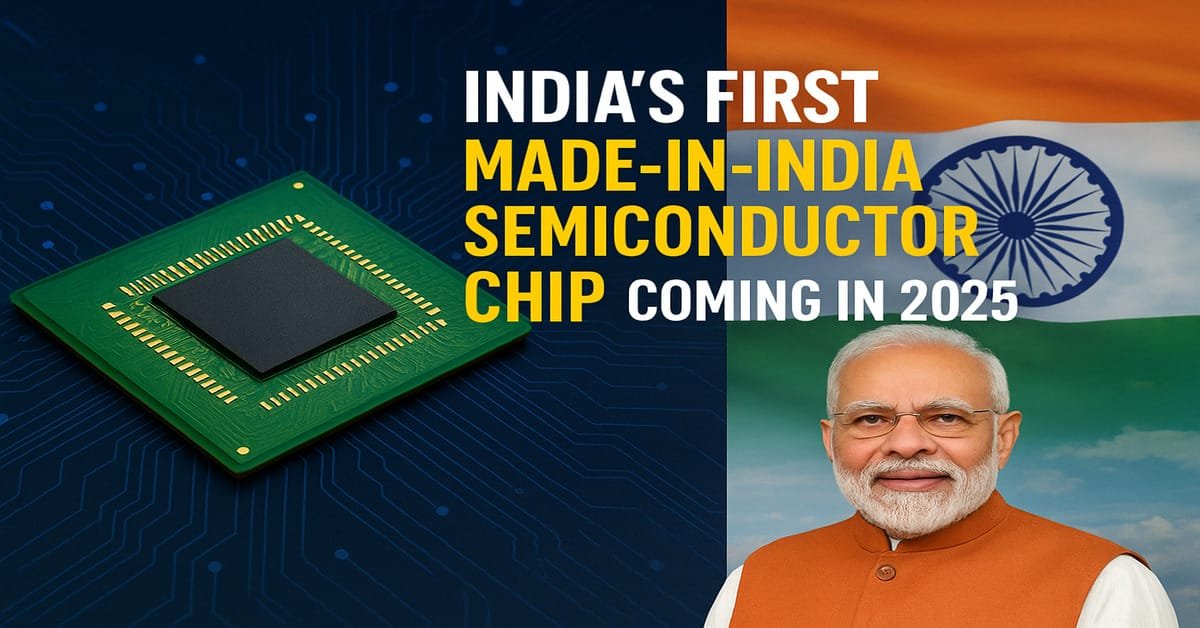In a landmark announcement that promises to reshape India’s technological landscape, Prime Minister Narendra Modi has declared that the country’s first domestically manufactured semiconductor chip will reach the market by the end of 2025. This is not just another product launch; it represents a giant leap towards India’s long-held goal of technological self-reliance, placing the nation firmly on the global map of advanced electronics manufacturing.
For decades, semiconductors-the tiny “brains” inside every electronic device from smartphones and refrigerators to cars and supercomputers-have been almost entirely imported. Depending heavily on foreign nations left supply chains exposed, a problem clearly seen during the worldwide shortage of semiconductors. The government’s ambitious Semicon India programme, with a massive outlay of ₹76,000 crore, was designed to change this very reality. The programme offers a powerful incentive: 50% financial support from the government to companies willing to set up semiconductor manufacturing units in India.
The recent progress shows this policy is bearing fruit. The Union Cabinet has just approved four new semiconductor manufacturing projects with an investment of ₹4,594 crore (approximately $524 million). These new facilities will be established in the states of Odisha, Punjab, and Andhra Pradesh. With this clearance, the count of sanctioned semiconductor projects has risen to 10 units, distributed across six states. The cumulative investment in this national effort has soared to a staggering ₹1.60 lakh crore (roughly $18.23 billion).
The impact of this investment reaches far beyond simply constructing factories. It is about building a future for thousands of skilled Indians. These projects are expected to create direct employment for over 29,000 skilled professionals in high-tech fields like engineering, design, and research. This step is likely to trigger a powerful ripple effect, driving the growth of allied industries and educational programs in semiconductor technology, ultimately establishing a durable ecosystem for the future.
One of the most exciting projects among the newly approved ones is India’s first commercial silicon carbide (SiC) semiconductor fabrication unit, to be built by a company called SiCSem. Silicon carbide chips represent a unique type of semiconductor that will play a vital role in the future. They are extremely efficient and are primarily used in high-power applications like electric vehicles (EVs), fast-charging infrastructure, and renewable energy systems like solar and wind power. Manufacturing these chips domestically places India in a leading position for the upcoming wave of electronics and clean energy innovations.
Prime Minister Modi’s vision, however, extends beyond semiconductors. In the same announcement, he revealed that India is rapidly developing its own homegrown 6G network, ensuring the country is a leader in the next wave of connectivity and not just a follower. In addition, as part of its strong push toward green mobility, India aims to start exporting electric vehicles to 100 countries worldwide. A significant program related to this EV export initiative is scheduled for August 26, 2024.
This strategic push into semiconductor manufacturing represents a fundamental shift for India. It is a move from being a passive consumer of technology to an active creator and a critical link in the global supply chain. For a nation recognized for its strength in software, this development lays a solid foundation in hardware, moving India closer to becoming a full-scale technology powerhouse. The advantages are manifold. To begin with, it significantly cuts reliance on imports, making the country less vulnerable to international disruptions. Moreover, it generates a large pool of high-value jobs, allowing talented engineers and scientists to pursue opportunities within the country. Finally, it draws in more global investment as international companies look to participate in this emerging hub. Finally, and perhaps most importantly, it provides a tremendous boost to other key industries like automotive, electronics, and telecommunications, which rely on a steady, domestic supply of chips to innovate and grow.
In conclusion, the arrival of the first made-in-India chip in 2025 is more than a deadline; it is a symbol of a new India. It reflects the country’s steady advancement up the technology manufacturing value chain. By boldly investing in this critical sector, India is not just securing its economic future but is also asserting its position as a vital and reliable player in the global technology stage, prepared to innovate and build the future from within its own boundaries.








